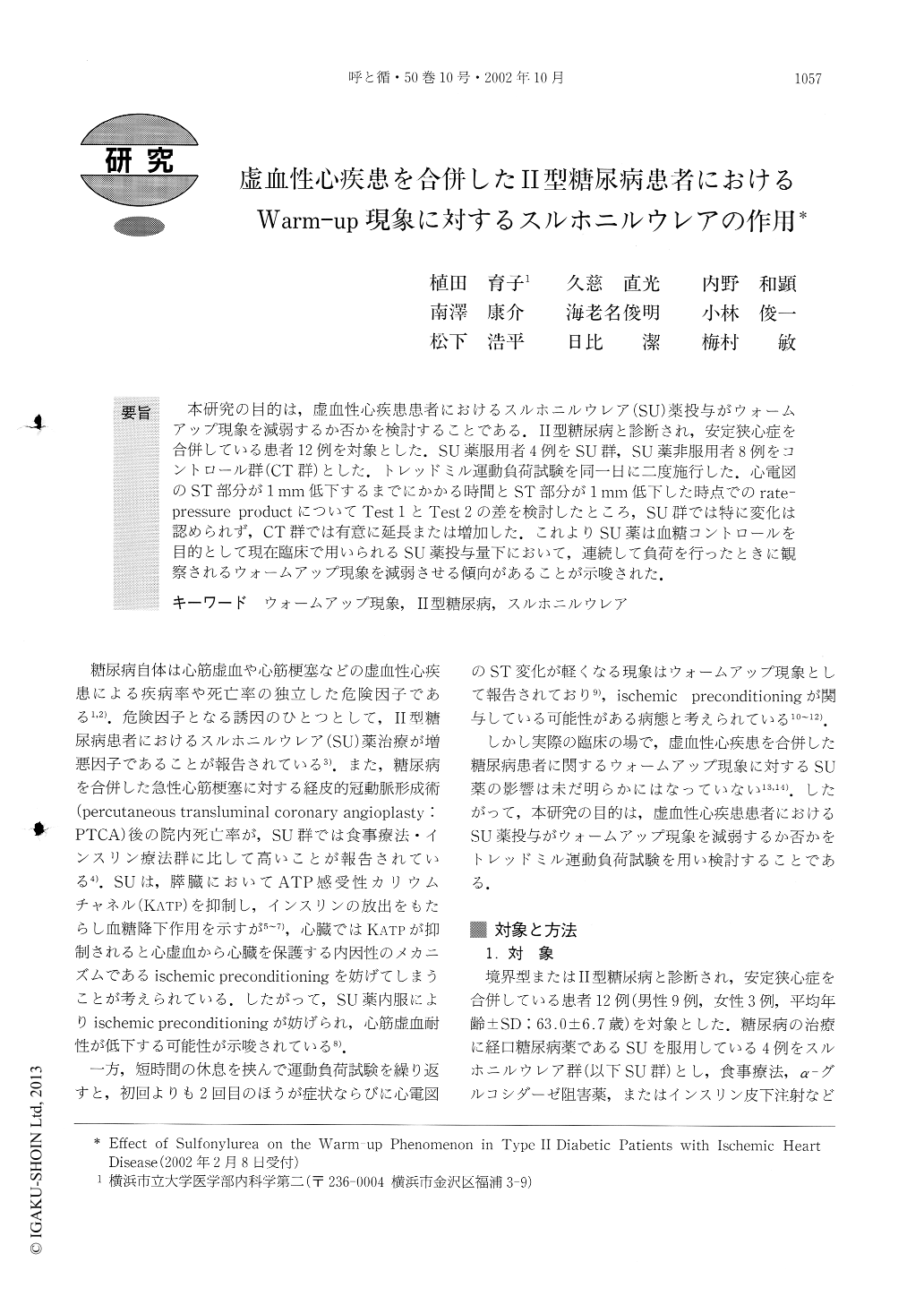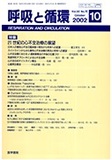Japanese
English
- 有料閲覧
- Abstract 文献概要
- 1ページ目 Look Inside
要旨 本研究の目的は,虚血性心疾患患者におけるスルポニルウレア(SU)薬投与がウォームアップ現象を減弱するか否かを検討することである.II型糖尿病と診断され,安定狭心症を合併している患者12例を対象とした.SU薬服用者4例をSU群,SU薬非服用者8例をコントロール群(CT群)とした.トレッドミル運動負荷試験を同一日に二度施行した.心電図のST部分が1mm低下するまでにかかる時間とST部分が1mm低下した時点でのratepressure productについてTest1とTest2の差を検討したところ,SU群では特に変化は認められず,CT群では有意に延長または増加した.これよりSU薬は血糖コントロールを目的として現在臨床で用いられるSU薬投与量下において,連続して負荷を行ったときに観察されるウォームアップ現象を減弱させる傾向があることが示唆された.
Objectives: Myocardial ischaemia and infarction are associated with substantially increased morbidity and mortality, in patients with diabetes mellitus. Although many factors contribute to the increased morbidity and mortality in patients with type II diabetes mellitus. one contributor may be the use of sulfonylurea. The increased tolerance to myocardial ischaemia observed during the second of two consecutives exercise tests, the warm-up phenomenon, has been proposed as a clinical model of ischaemic preconditioning. The aim of this study is to investigate whether sulfonylurea, a selective KATP channel blocker, abolishes the warm-up phenomenon.
Methods: Twelve type II diabetic patients with chronic stable angina pectoris were divided into twodifferent groups of patients: the SU group (receiving SU), the CT group (not receiving SU). All patients underwent two consecutive treadmill exercise tests with a recovery time to establish baseline conditions.
Results: There was no difference in characteristics of the subjects between the SU group and the CT group. In the SU group, the time to 1mm ST segment depression didn't change during the second test compared with the first (SU group: Test 1, 3.5±1.0 vs Test 2, 2.8±1.0min, p=NS), but it was significantly prolonged in the CT group (CT group: Test 1, 6.1±1.1 vs Test 2, 7.3±0.8 min, p<0.02). In the SU group rate-pressure product at the time of the 1mm ST segment depression didn't change during the second test compared with the first (SU group: Test 1, 177.9±16.9 vs Test 2, 155.1±27.3 beats・min-1・mmHg・102, p=NS), but it significantly increased in the CT group (CT group: Test 1, 186.2±14.3 vs Test 2, 216.7±17.3 beats・min-1・mmHg・102, p<0.05). The difference in time to 1mm ST segment between the first test and the second test in the SU group was significant compared to that in the CT group.
Conclusions: Sulfonylurea, an oral hypoglycemic agent, used with an ordinary clinical dose led to a decrease in the warm-up phenomenon, which is a clinical manifestation of ischaemic preconditioning, on two consecutive exercise tests. Therefore, sulfonylurea should be prescribed carefully in diabetic patients with coronary heart disease.

Copyright © 2002, Igaku-Shoin Ltd. All rights reserved.


